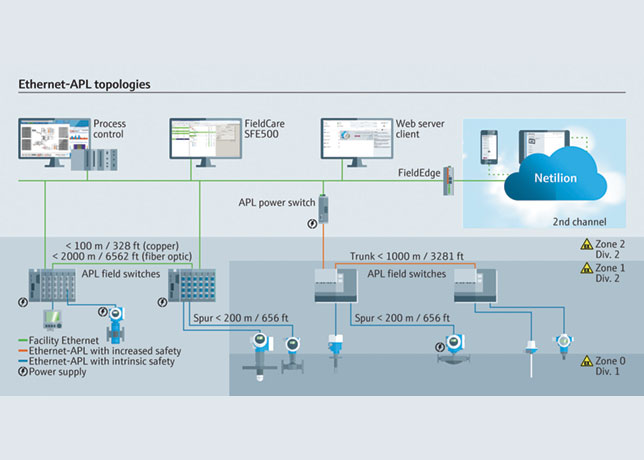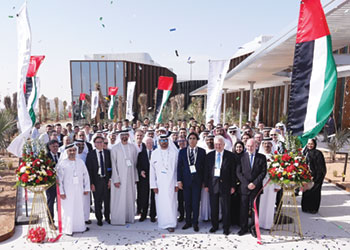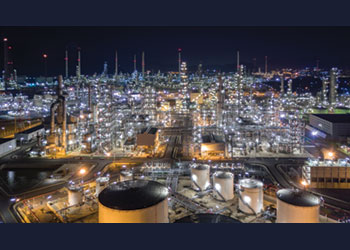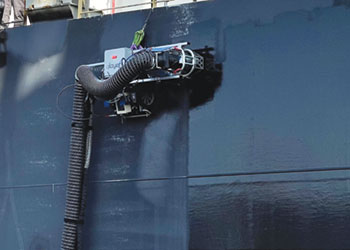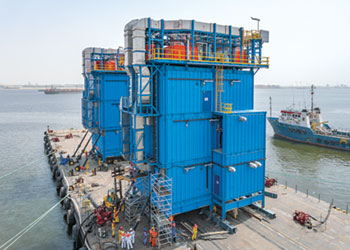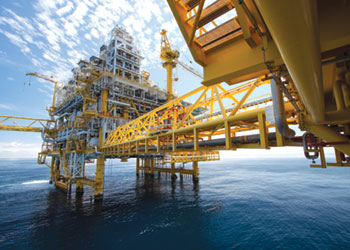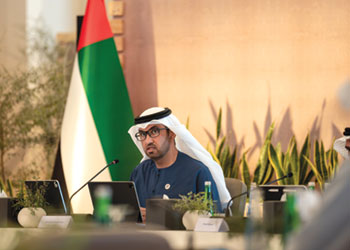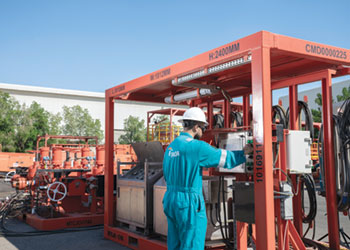
 The auto-choke manifold
The auto-choke manifold
The company has designed, engineered and manufactured special technologies and applications that have taken the well-production testing globally to a level of perfection, Raid BuKhamseen, Senior Manager SAOO Account, and Syed Haider Abbas, Project Manager (DAS), tell OGN
In its relentless pursuit to develop innovative technologies for testing the production of oil and gas wells, TAQA has not only acquired the highest tear technologies available in this field, but it has also introduced many modifications and upgrades to such technologies making them more suitable for use in challenging operating environments.
In addition, and in many special value-adding cases, TAQA has engaged in the designing, engineering and manufacturing of special technologies and technology applications that have helped to take the well-production testing globally to its next level of perfection.
TAQA WELL PRODUCTION TESTING TECHNOLOGY INNOVATIONS
In addition to the conventional well testing backages offered by TAQA which can accommodate most of the well-testing market requirements the company, in 2018, designed and manufactured a smart well test unit paving the way for the collective transition to smart well testing across the Mena region.
 |
BuKhamseen and Abbas ... innovative mindset |
The development introduced to the market by the new smart well testing unit was enormous.
Once the mobile unit is positioned on the well site and connected to the well, operations can take place in a fully automated mode.
The smart well testing unit minimises the necessity for human intervention during well testing operations.
It also produces quick and interactive well-test analysis for key metrics, such as permeability, skin damage and reservoir fluids, average pressure, heterogeneities, reservoir hydraulic connectivity and reservoir boundary.
Another example of TAQA innovations in the well production testing technologies is the development and manufacturing of the Multi-Phase Flow Dynamic Simulator (MPFDS), which introduced a facelift for traditional well-testing operations.
This digitalisation approach allowed the automation of well testing workflow with very diverse data output options based on user preferred parameters and specifications.
The well production testing operations footprint has been reduced to 3 sq m, with the operation now being conducted by just two specialists thus reducing manpower requirements by more than half.
TAQA has led the transition to digital well testing across the Mena and other regions globally.
The process of simulating the multi-phase flow composition is considered to be the first-ever application of multi-phase flow prediction.
Such simulation will soon replace the need to physically measure using sensors due to its extremely accurate results meaning its output can perfectly resemble the original dynamic well conditions.
DEPLOYMENT OF UPGRADED AUTOCHOCK MANIFOLD
Automatically controlled back-pressure choke manifold was first introduced to the upstream industry as a main component in the Managed Pressure Drilling (MPD) or Under-Balanced Drilling (UBD) operations.
MPD or UBD is usually used in exploratory and delineation wells, especially gas exploration. This is done to avoid heavy reservoir invasion of mud filtrate, which can induce significant reservoir damage and risk, masking original reservoir properties and messing the reservoir or downgrading it to be classified as sub-economical.
To reduce the mud invasion, hydrostatic head pressure should not exceed the original reservoir pressure.
This is achieved by reducing the mud weight and keeping the hydrostatic column pressure slightly below the reservoir pressure while using the auto-choke manifold to apply pre-defined surface pressure, which allows controlling the pressure settings at the surface while drilling the well to be in underbalanced or at balance as required.
Lately, automatically controlled choke manifold has been introduced to well production testing services as more demanding requirements surfaced to face the well testing services.
For example, many producing wells went offline due to scale accumulation significantly contributing to a reduction in the production potential.
Typically, operating companies will schedule a workover rig to visit such wells to recover the production completion, clean the well from the scale, and rerun the production completion to recommence the production.
This approach to tackling scale production typically requires significantly large scale and footprint operations, high capex, and can involve having the well out of production for up to two years or more.
The descaling operation has evolved over the years until it reached a point where the descaling could have been performed while keeping the well flowing and avoid killing the well.
So, for several reasons, the need for more proactive and slimmer operations was extreme. This resulted in the service companies adopting new and innovative rigless solutions for the scale problem by using coiled-tubing live descaling.
In this regard, the auto-choke manifold is a primary component within the surface flow back system as it is required to maintain the required surface pressure while many flowing parameters are changing during the live descaling operations.
The scales consist mainly of sulfates, sulfides and carbonates, and they can often be radioactive due to the presence of lead (Pb) isotopes.
CT Lifting of the scales to the surface depends upon the size and type of the scale and hence it requires an optimum lifting flow rate to maximise the efficiency of descaling operation.
This rate is achieved by adjusting the surface back-pressure through choking the fluid flow using choke-manifold.
This back-pressure can increase due to the scales moving through the choke manifold and partially blocking the flow-path and causing the rise of back pressure, which in response reduces the scales lifting rate.
This results in the fallback of the scales in well-bore (struggle similar to wellbore storage effect) and can initiate slugging which requiring further remedies.
If these changes in back pressure are not countered promptly, the descaling operation cannot be completed efficiently.
This is the point where automated stabilisation of flowing pressure can efficiently take control using the auto-choke manifold as it is designed to automatically maintain the back-pressure during service operations within a predetermined pressure operating window.
It consists of two tight shut-off capable hydraulically actuated full-bore chokes that are controlled by a programmable logic controllers (PLC)-based system to maintain the selected set point pressure through the interface panel for operator to input of required settings and for displaying control system input and output parameters.
TAQA took an extra step in terms of quality by customising the material of chokes to be Inconel 625 (due to the highly erosive nature of the descaling operation) and 40 per cent H2S tolerance.
In terms of safety, TAQA integrated an additional set of hydraulic gate valves into upstream and downstream of the auto choke manifold for remote operation and with a provision to control and monitor the whole automated operation remotely using a graphical user interface on a computer located in the lab cabin.
In terms of operational reliability, TAQA incorporated a manual control option into the auto choke manifold so that it can be used as a conventional choke manifold if required.
Moreover, the failure protocols were specially programmed to store and retain the pre-failure system settings on resumption.
The choke is equipped with redundancy of monitoring sensors and a feedback system in order to minimise the impact on the operations.
Overall TAQA’s automated choke manifold is an exceptional piece of technology that is designed exclusively to handle all the possible scenarios of descaling operations and conventional testing operations as well.



































































